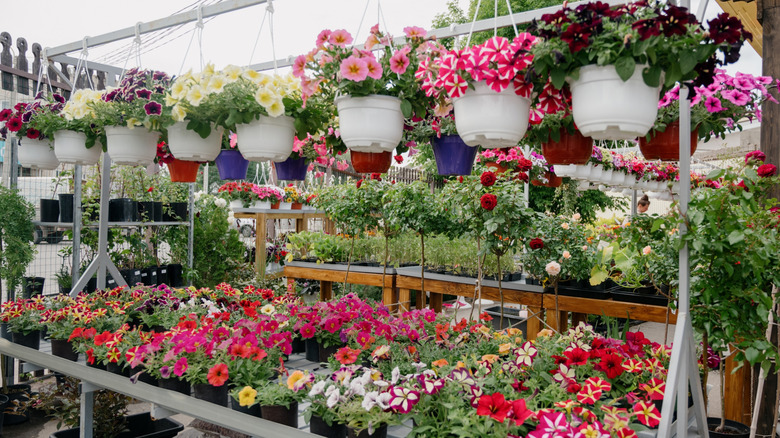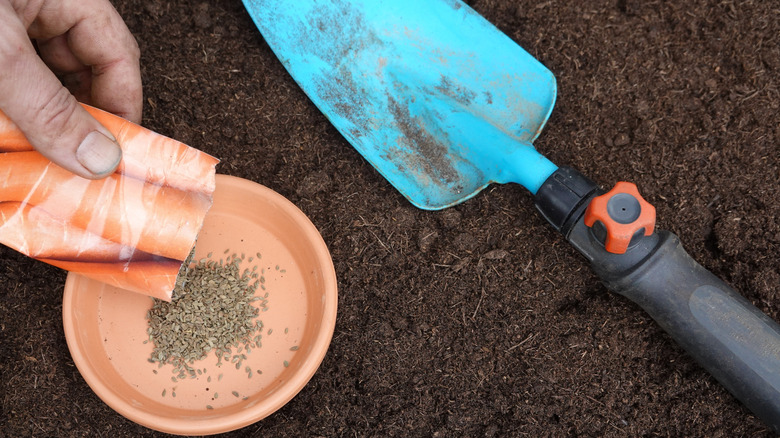The Common Vegetable You Shouldn't Buy As A Seedling If You Want The Best Harvest
We may receive a commission on purchases made from links.
When it's time to add some vegetables to your garden, you're probably keen to take a trip to the local garden center and pick up a few trays of seedlings. While seedlings often give you a quick and simple way to get the crops off to a good start and enjoy the harvest sooner, it's not always the best way to start plants. In fact, there's one common vegetable you should never buy as a seedling if you're looking for the best harvest — the humble carrot. Carrots should be grown from seed sown directly into the soil, and there are several good reasons for this.
For starters, growing carrots from seeds is far more economical than buying seedlings. Carrot seeds are tiny, and you can get a lot of plants from just one inexpensive packet — like this two-pack set of HOME GROWN Tendersweet Heirloom Carrot Seeds, which contains 6,000 seeds and costs just $6. On the other hand, seedlings often come in small trays, each with a limited number of plants. Although homegrown carrots taste superior to store-bought ones, when you compare the cost of buying a bag at the store to a tray of six or so seedlings, you'll see that it's not cost-effective. But, if you purchase a pack of seeds, depending on the variety, it's feasible that you'll end up with hundreds of plants, which is one of the major benefits of starting seeds instead of buying plants — especially if you want a bumper harvest. Worse yet, carrot seedlings won't always thrive or grow the way you want them to when you transplant them into the garden.
Carrots don't transplant well
There's another important reason for growing carrots from seeds rather than from seedlings: Like most root vegetables, they don't transplant well, and you might end up with misshapen or stunted carrots. Carrots have a long taproot, which is the part that turns into that scrumptious edible vegetable. These roots can grow rather quickly, which creates a problem if the plants were initially seeded in a shallow container such as a seedling tray. Once the root touches the bottom of the tray, it has nowhere else to go and will, most likely, continue growing sideways — an issue you inherit once you purchase the seedlings.
Another problem you might face when transplanting seedlings is ending up with carrots that are forked because the taproot was damaged during planting. All of this also means that carrots aren't the best crop to start indoors, even if you're using seeds. But, if you have trouble getting seeds to germinate outdoors or you're constantly losing seedlings to pests like slugs and snails, try growing shorter varieties and planting the seeds into tall receptacles that you can plant straight into the ground. This is why it's beneficial to grow carrots in toilet paper tubes. As an alternative, if you don't have a large outdoor growing area, you can also successfully grow carrots in containers as long as they're deep enough to allow the taproot to fully develop.

